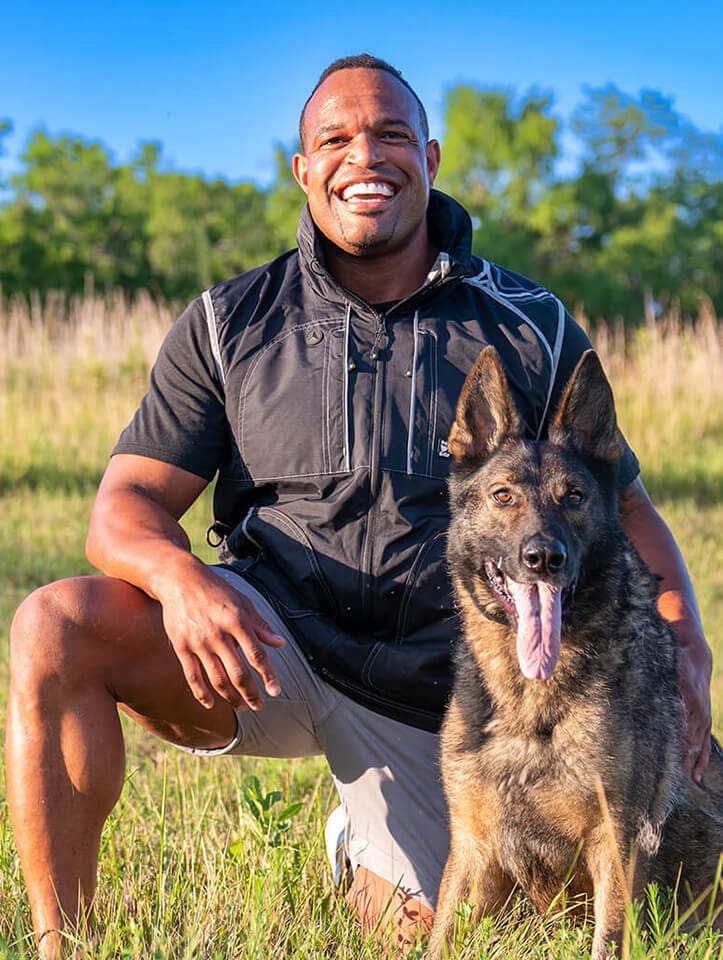Simple Dog Training Techniques for a Well-Behaved Pet
Simple Dog Training Techniques for a Well-Behaved Pet
Blog Article
The Ultimate Guide to Pet Training: Change Your Pet dog's Behavior
Reliable dog training is crucial for cultivating a harmonious partnership in between pets and their owners. This overview not just aims to outfit you with the necessary tools to change your dog's behavior but also welcomes you to explore how these fundamental concepts can lead to a deeper link with your pet dog.
Understanding Pet Dog Habits
Recognizing canine habits is crucial for efficient training and a harmonious partnership in between pets and their owners. A pet dog's behavior is influenced by a combination of genetics, atmosphere, and experiences. Dog training. Acknowledging these factors allows proprietors to tailor their training approaches to meet the private requirements of their pets
Pet dogs communicate mostly through body language, articulations, and facial expressions. A wagging tail can indicate enjoyment or joy, while a tucked tail might indicate worry or entry. Observing these signs allows owners to respond appropriately, strengthening favorable behaviors and resolving adverse ones effectively.
Furthermore, recognizing the social structure of dogs can supply understandings right into their behavior. Pets are pack animals, and they thrive in an organized atmosphere. Developing consistent rules and clear borders can protect against complication and promote a complacency.
Moreover, acknowledging the all-natural instincts of pets, such as the urge to dig or chase, is critical. These impulses can be rerouted through suitable outlets, such as play or workout. By adequately comprehending these behavior facets, owners can cultivate a favorable training experience, inevitably bring about a loyal and well-adjusted canine friend.
Essential Training Strategies
Efficient dog training relies upon a variety of important methods that can dramatically boost the understanding process for both the proprietor and the pet dog. One fundamental technique is favorable support, which includes rewarding preferable behaviors with treats, praise, or play. This approach motivates dogs to repeat the actions that lead to positive results, promoting a trusting relationship between the family pet and owner.
Another key technique is consistency in commands and expectations. Utilizing the exact same spoken cues and hand signals assists the dog recognize what is required, minimizing confusion and promoting quicker knowing. In addition, establishing clear limits and policies is critical for reliable communication.
Socialization is additionally an important component of training. Exposing canines to various atmospheres, individuals, and other pets aids them establish appropriate social skills and lowers anxiousness in strange circumstances.
Finally, patience and timing are important. Training sessions need to be regular but brief, making certain that the canine stays engaged and receptive. By employing these important techniques, owners can develop a positive and organized training experience that promotes etiquette and strengthens the bond with their canine companions.
Developing a Training Arrange
How can a well-structured training timetable enhance a canine's discovering experience? A training routine provides consistency, guaranteeing that pet dogs receive normal, focused guideline. This predictability aids dogs comprehend what is anticipated of them, reinforcing their discovering and enabling much better retention of commands and behaviors.
When developing a training routine, it is vital to think about the dog's age, type, and private temperament. Young puppies might take advantage of shorter, more frequent sessions, while grown-up dogs might love longer, much less constant training durations. Including a range of activities can also maintain the sessions engaging, protecting against monotony and advertising excitement for discovering.
In addition, scheduling training sessions at certain times of the day can help solidify a regimen. Pairing training with daily walks or play can produce a favorable association with learning. It is also important to include time for support, such as treats or praise, to award preferred behaviors quickly.
Finally, versatility is crucial. While uniformity is crucial, being versatile to the canine's state of mind or power level can improve their understanding experience. A well-crafted training timetable inevitably lays the foundation for efficient interaction and a stronger bond in between the pet dog and proprietor.
Common Educating Obstacles
In spite of having a well-structured training timetable, pet dog owners frequently run into different obstacles throughout the training process. One typical issue is incongruity in cues and commands. When several relative use various terms or tones, a pet might become baffled, hindering its capability to find out successfully.
An additional regular difficulty is distraction. Dog training. Pets are naturally curious creatures, and outside stimulations such as other pets, noises, or people can divert their focus throughout training sessions. This requires owners to produce a controlled atmosphere or slowly introduce interruptions to reinforce focus
Furthermore, varying power helpful hints degrees can influence training results. High-energy pet dogs might have a hard time to settle and focus, while much more easygoing types might need added inspiration to involve. Tailoring the training technique to fit the specific canine's personality is crucial for success.

Building a Solid Bond
A strong bond between a dog and its owner is crucial for effective training and general wellness. Dog training. This relationship fosters count on, which is crucial for efficient interaction throughout the training procedure. When a canine feels secure and linked to its owner, it is a lot more most likely to react favorably to hints and commands
To construct this bond, consistency is key. browse around these guys Developing a regimen that includes normal feeding, exercise, and training sessions aids produce a feeling of security. Furthermore, favorable support techniques, such as deals with, praise, and play, enhance preferred actions while enhancing the emotional link.
Socialization is an additional important facet of bond-building. Subjecting your pet to various settings, individuals, and other animals helps them really feel more certain and comfy, enhancing the bond with their proprietor. Engaging in activities together, such as strolling, playing fetch, or joining obedience training, advertises team effort and common enjoyment.
Verdict

Recognizing dog actions is important for reliable training and an unified relationship between canines and their proprietors.Reliable dog training relies on a range of important strategies that can considerably boost the learning process for both the pet dog and the proprietor.Despite having a well-structured training routine, dog proprietors usually come across different challenges throughout the training procedure.In conclusion, effective pet training relies on an extensive understanding of canine habits, the application of necessary techniques, and the establishment of an organized training timetable. By emphasizing favorable reinforcement and consistency, dog owners can my company significantly enhance their pet dogs' actions, eventually making sure a harmonious partnership and promoting the health of both the pet dog and its atmosphere.
Report this page